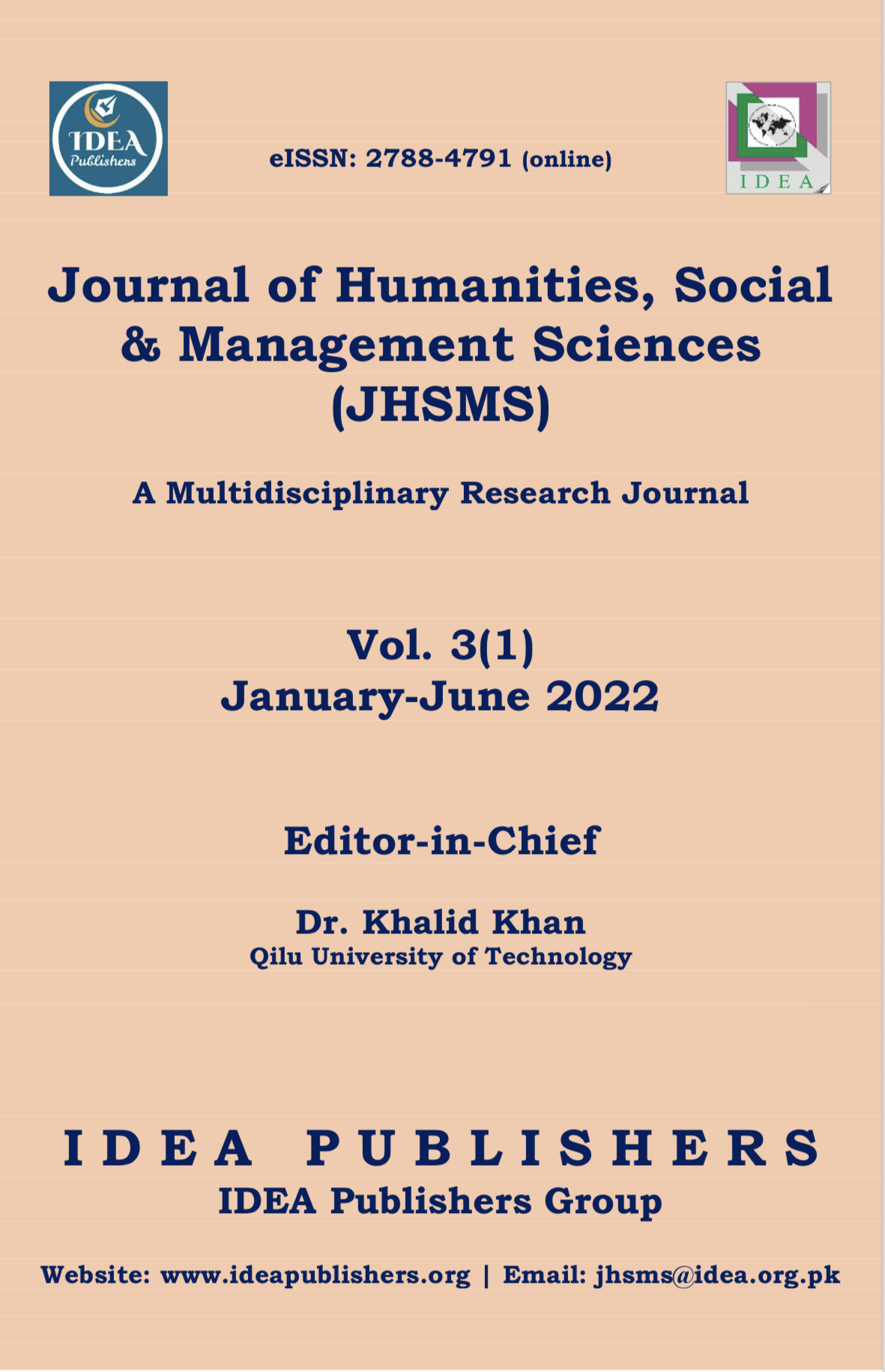Imperfections in syllabus designing of English course at the primary level of education in Pakistan: an obstacle in attaining language proficiency
DOI:
https://doi.org/10.47264/idea.jhsms/3.1.22Keywords:
English language, syllabus designing, education policy, primary education, textbooks, public schools, curriculum of English, functional based syllabusAbstract
The syllabus of English that has been adopted in public and private schools in Pakistan does not meet the criteria to achieve the targets. It has been revised at some point of times, but the problems persist and impede the students' learning performance, but the problems persist and impede the students' learning performance. The syllabus designers have developed it without considering the needs of the students and the instructors' abilities. The researcher has focused on evaluating the imperfection in syllabus designing that hampers learner to learn and instructors to teach. The objectives of this study are understanding, evaluation, and development of syllabus in English language skills. This study has been conducted at the primary school level to understand the learners' problems at an initial level. The selected material for analysis is the textbook of English taught at grade 1 in public schools of Pakistan. The analysis of the contents of the textbook syllabus would enable the researchers to develop a hypothesis to remove all the flaws from the syllabus of English textbooks. The questions of syllabus designing at the initial level, the contents of the syllabus, and to develop a functional-based syllabus have been addressed in this research.
References
Brandt, R. S., & Tyler, R. W. (2011). Goals and objectives. In A. C. Ornstein, E. Pajak, & S. B. Ornstein (Eds.), Contemporary issues in the curriculum (5th ed., pp. 10-20). Pearson.
Byrd, P. (2001). Textbooks: Evaluation for selection and analysis for implementation. In M. Celce-Murcia (3rd ed.), Teaching English as a second or foreign language (pp. 415-428). Dewey Publishing Services.
Coracini, M. J. (2014). Between acquiring and learning a language: subjectivity and polyphony. Bakhtiana, 9(2), 4-24. https://doi.org/10.1590/S2176-45732014000200002 DOI: https://doi.org/10.1590/S2176-45732014000200002
Dubin, F., & Olshtain, E. (1986). Course design: Developing programs and materials for language learning. Cambridge University.
Graves, K. (1996). Designing language courses: A guide for teachers. Heinle and Heinle.
Harmer, J. (2000). The practice of english language teaching. Pearson Education Ltd.
Hutchinson, T., & Waters, A. (1987). English for specific purposes. Cambridge University. DOI: https://doi.org/10.1017/CBO9780511733031
Irfani, B. (2014). Syllabus design for English courses. English Education: Jurnal Tadris Bahasa Inggris, 6(1), 21-41. https://doi.org/10.24042/ee-jtbi.v6i1.517
Krahnke, K.J. (1987). Approaches to syllabus for foreign language teaching. Prentice Hall.
Krahnke, K.J., & Knowles, M. (1984). The basis for belief: What ESL teachers believe about language teaching and why. Paper presented at the 18 annual meeting of Teacher of English to Speakers of Other Languages, Houston, March, 1984.
Long, M., & Sato, C. (1983). Classroom foreigner talk discourse: Forms and functions of teachers' questions. In H. Seliger & M. Long (Eds.), Class oriented research in second language acquisi tion. Rowley, Newbury House.
Mukundan, J., Hajimohammadi, R., & Nimehchisalem, V. (2011). Developing an English language textbook evaluation checklist. Contemporary Issues in Education Research, 4(6), 21-28. https://doi.org/10.19030/cier.v4i6.4383 DOI: https://doi.org/10.19030/cier.v4i6.4383
Nation, I.S. P., & Macalister, J. (2010). Language course design. Routledge. DOI: https://doi.org/10.4324/9780203870730
Sadler, D. R. (1998). Formative assessment: Revisiting the territory. Assessment in Education: Principles, Policy & Practice, 5(1), 77-84. DOI: https://doi.org/10.1080/0969595980050104
Wiggins, G., & McTighe, J. (2006). Understanding by design. Alexandria, VA: Association for Supervision and Curriculum Development. https://www.sabes.org/sites/default/files/news/5_UbD_WhitePaper0312%5B1%5D.pdf
Yalden, J. (1987). Principles of course design for language teaching. Cambridge University.
Downloads
Published
How to Cite
Issue
Section
License
Copyright (c) 2022 Zohaib Zahid, Asmara Shafqat

This work is licensed under a Creative Commons Attribution-NonCommercial 4.0 International License.
Please click here for details about the Licensing and Copyright policies of IDEA-PG.















